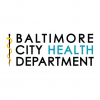Baltimore City Announces Beginning of Code Blue Extreme Cold Season
Friday Nov 15th, 2019
FOR IMMEDIATE RELEASE
Jeff Amoros: 667-203-1021; jeffrey.amoros@baltimorecity.gov
BALTIMORE, MD (November 15, 2019)
Mayor Bernard “Jack” Young and Health Commissioner Letitia Dzirasa today announced the start of Baltimore City’s Code Blue Extreme Cold program for the coming winter. Code Blue Extreme Cold is a multi-agency effort to reduce hypothermia deaths by protecting homeless individuals, seniors and other vulnerable populations from extreme cold weather.
Through March 15, 2020, the Health Commissioner will declare a Code Blue Extreme Cold alert based on the following criteria:
- Temperatures, including wind chill, are expected to be 13˚F or below. This threshold can be reached by having a temperature at or below 20˚F with 5 mph sustained winds or a temperature at or below 25˚F with 15 mph sustained winds.
- Other conditions (e.g., strong winds, forecasted precipitation for more than two hours, extended period of cold, sudden cold after a warm period) deemed by the Health Commissioner to be severe enough to present a substantial threat to the life or health of vulnerable Baltimore citizens.
“During extreme weather conditions, we encourage all Baltimore residents to take the required precautions to ensure their safety and that of their family,” said Mayor Bernard C. “Jack” Young. “We work diligently to ensure that city services continue during these extreme weather events but we also need residents to be prepared and take steps to resist the worst effects of the extreme cold. For those residents who need assistance in staying warm, we encourage you to reach out for available resources and assistance.”
During the Code Blue Extreme Cold season, City agencies work together to:
- Increase capacity at homeless shelters, and extend City homeless shelter hours
- Distribute meals to at-risk senior citizens
- Provide home weatherization services
- Help individuals apply for energy assistance
- Provide cold weather education and outreach efforts
Last winter (November 15, 2018 through March 15, 2019), the City experienced 13 Code Blue Extreme Cold days and the Maryland Department of Health Office of the Chief Medical Examiner recorded 15 cold-related deaths in Baltimore City. Based on the historical data, populations in Baltimore City most vulnerable to cold-related death include the elderly, individuals with pre-existing heart conditions, those with substance use disorder, and individuals experiencing homelessness.
“Winter is right around the corner, and brings with it colder temperatures and precipitation. We want to remind Baltimore City residents to beware of the health risks associated with exposure to cold weather, and to check in on their neighbors. Please be aware that resources exist to help you if you cannot afford heat in your home, and dress warmly if you need to be outside,” said Baltimore City Health Commissioner Dr. Letitia Dzirasa.
Residents are reminded of the dangers of carbon monoxide poisoning and to never use a generator inside. Additionally, gas ovens are not safe to use for heating homes. Residents are encouraged to install carbon monoxide detectors, which can be purchased at local hardware or building supply stores.
For more information on energy assistance, residents can contact their nearest Community Action Partnership (CAP) Center.
- Northern CAP Center (5225 York Road, 21212) – 410-396-6084
- Northwest CAP Center (3939 Reisterstown Road, 21215) – 443-984-1384
- Southern CAP Center (606 Cherry Hill Road, 21225) – 410-545-0900
- Southeast CAP Center (3411 Bank Street, 21224) – 410-545-6518
- Eastern CAP Center (1731 E. Chase Street, 21213) – 410-545-0136
Baltimore City Health Department also urges owners to keep their pets inside during cold weather. If your pet is outdoors, they must be protected by a well-constructed, raised shelter that is dry and draft-free. Sufficient bedding and a door flap must be in place to maintain body heat. Fresh, unfrozen, drinkable water must be provided at all times. If the temperature falls to 10˚F or below, animals must be brought into a heated enclosure.
For more information about cold weather sheltering, contact the Mayor’s Office of Homeless Services at 311, 211 or on their website.
For more information about Code Blue Extreme Cold, visit the Health Department’s website.
For other cold-related inquiries and service requests, or to find a nearby homeless shelter, residents can call 311 or 211.
